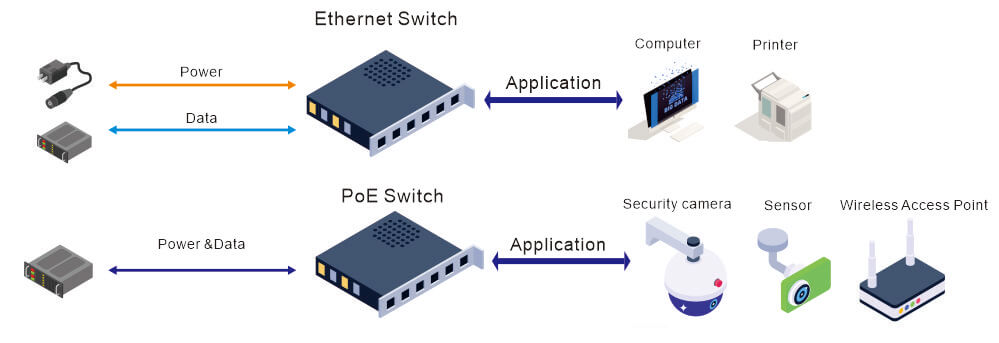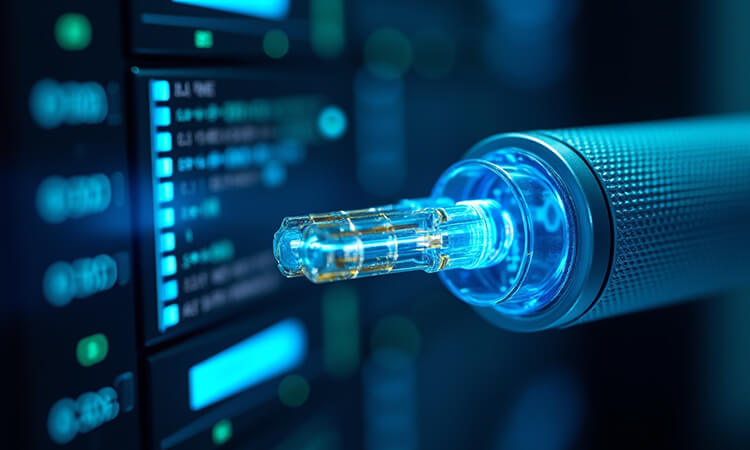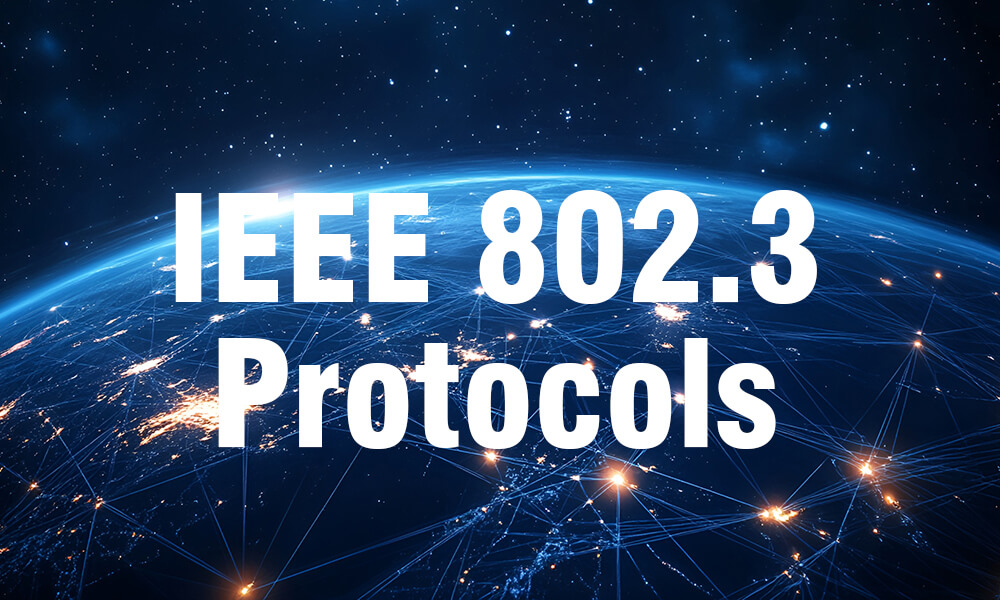Power over Ethernet switch ( PoE Switch ) has become the backbone of efficient, scalable networks in the fast-evolving world of the Internet of Things (IoT). This specialized switch does more than manage data flow—it integrates three critical capabilities: delivering power to devices, strengthening network security, and ensuring seamless connectivity. Let’s break down how it makes IoT ecosystems smarter and more reliable.
Power: PoE Swtich Fueling IoT Devices Without Limits

Regular ethernet switch VS PoE switch
One of the biggest hurdles in IoT deployment is powering distributed devices—sensors in warehouses, cameras in smart cities, or access points in offices—often placed where outlets are scarce. PoE switch solves this by sending both electricity and data through a single Ethernet cable.
This dual functionality simplifies installation: no need for electricians to run extra wiring. A sensor mounted on a factory wall or a camera high on a street pole can be powered up with just one cable, cutting deployment time by half. PoE switch also supports flexible power management. With standards like IEEE 802.3bt, it delivers up to 90W per port—enough for high-demand devices like pan-tilt-zoom cameras or industrial controllers. IT teams can remotely monitor power usage, adjust output based on device needs, and even shut down idle devices—optimizing energy use and reducing costs.
Security: Safeguarding IoT at the Edge
IoT devices are frequent targets for cyberattacks due to their limited built-in security. PoE switch acts as a gatekeeper, fortifying networks from the edge.
Key security features include strict access controls: only devices with authorized MAC addresses or 802.1X credentials can connect, blocking rogue sensors or hacked devices. VLAN segmentation adds another layer—isolating IoT traffic (e.g., hospital patient monitors) from critical systems to contain breaches. PoE switch also flags anomalies, like sudden data spikes from a sensor, triggering alerts for quick action. Regular firmware updates, managed via the switch, keep security protocols sharp against new threats.
Connectivity: PoE Swtich Uniting IoT Devices Seamlessly
IoT thrives on communication, but diverse devices—from low-power sensors to high-bandwidth cameras—often use different protocols. PoE switch bridges these gaps, ensuring smooth data flow.
It supports multiple protocols, translating between Ethernet, Wi-Fi, and industrial standards like Modbus, letting sensors, cameras, and controllers “talk” to each other. QoS (Quality of Service) features prioritize critical traffic: a smart grid sensor’s real-time data gets priority over non-urgent firmware updates, preventing delays. With high-speed ports (1Gbps or more), PoE switch handles growing device counts without lag, making it ideal for scaling from small offices to large industrial parks.
Why IoT PoE Switch Matters
PoE switch isn’t just an accessory—it’s essential for modern IoT. By combining power delivery, security, and connectivity in one device, it simplifies deployments, reduces costs, and makes networks more resilient. Whether in healthcare, manufacturing, or smart cities, it turns fragmented IoT devices into cohesive, high-performing systems.





